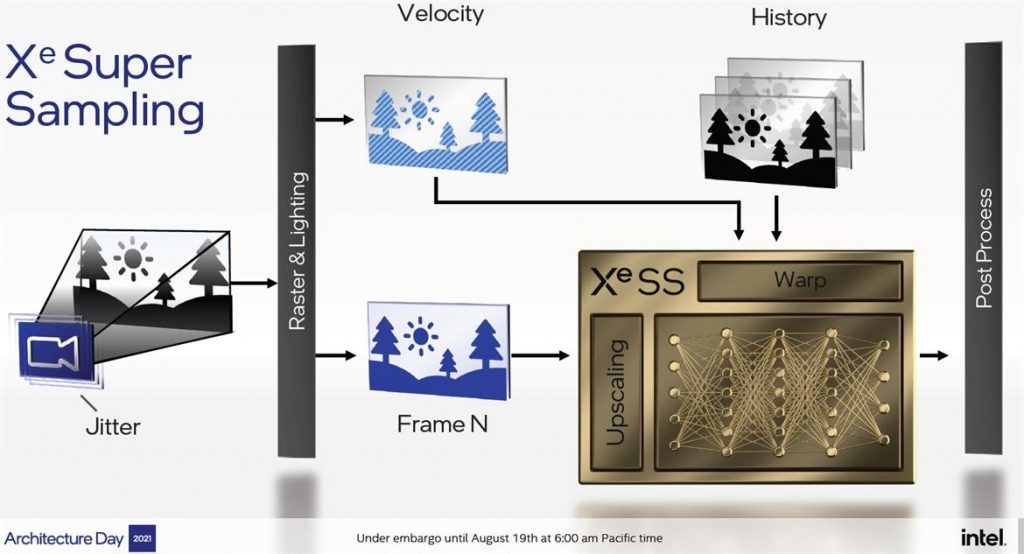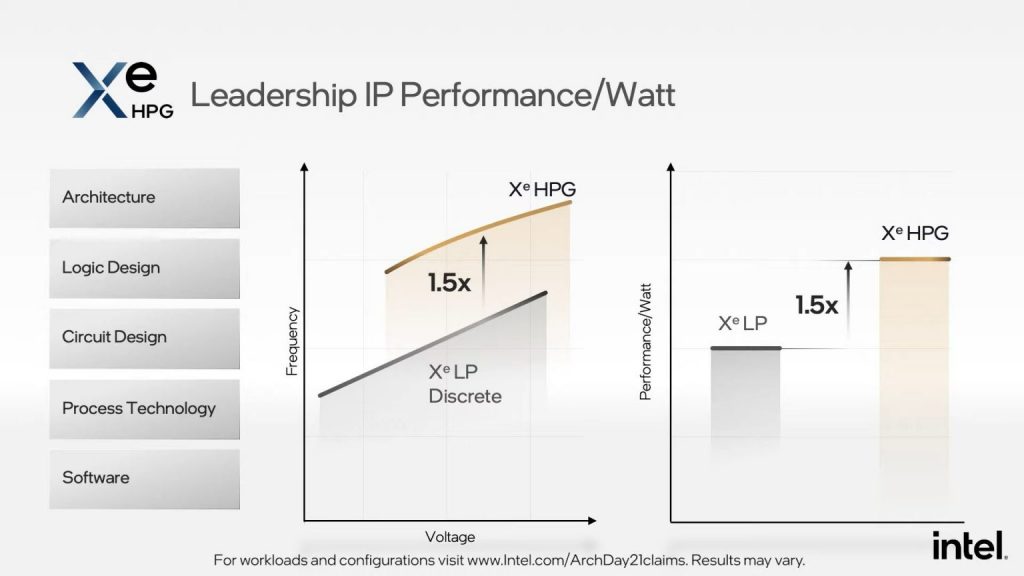Intel has unveiled its biggest architectural shifts in a generation for CPUs, GPUs and IPUs to satisfy the crushing demand for more compute performance.
Ubiquitous compute, pervasive connectivity, artificial intelligence and cloud-to-edge infrastructure drive a diverse and expanding range of computing workloads from the desktop to the data centre.
At Architecture Day 2021, Intel detailed the company’s architectural innovations to meet this exploding demand, setting the stage for new generations of leadership products. Intel also provided details on their upcoming graphics architectures.

Xe-HPG architecture
Xe-Cores will be grouped in Render Slices, which will be used to build Intel DG2 GPUs. Each Xe-Core will be build using 16 Vector Engines (256-bit) and 16 Matrix Engines (1024-bit per engine). There is a single Ray Tracing Unit under each Xe-Core. Thus, DG2 GPUs will have an equal number of Xe-Cores and Ray Tracing Units. The DG2 GPUs feature Memory Fabric which is a large L2 Cache.

Intel XeSS will be powered by DP4a and XMX instructions. The XMX Matrix Engines are the building block of AI acceleration on next-generation Arc “Alchemist” GPUs.
Intel XeSS is temporal-based upscaling technology that will account for motion vectors (velocity) and the history of previous frames. Before they reach postprocessing, this data will be processed by XeSS XMX instructions
Intel’s Xe HPG Roadmap
Here’s the full lineup of Intel Xe HPG GPUs:
- Xᵉ HPG – Alchemist
- Xᵉ² HPG – Battlemage
- Xᵉ³ HPG – Celestial
- Xᵉ Next Architecture – Druid

Intel only confirmed that the Alchemist GPU series based on Xe-HPG (DG2) GPUs will be launching in Q1 2022 but has given no further details on future generations.
via Videocardz

